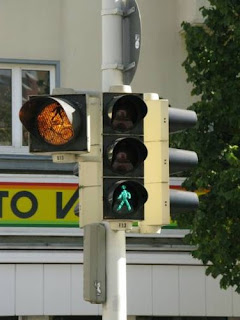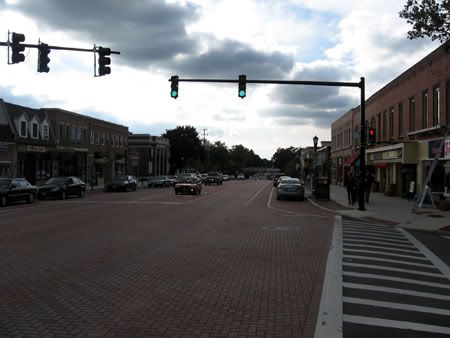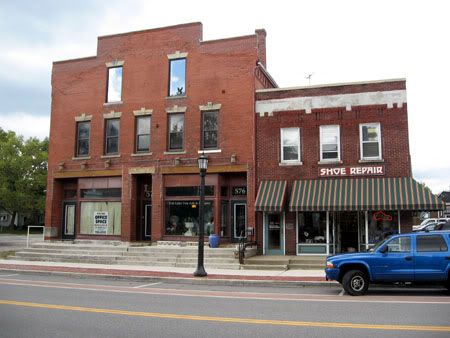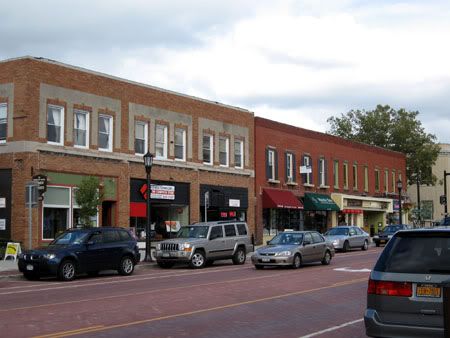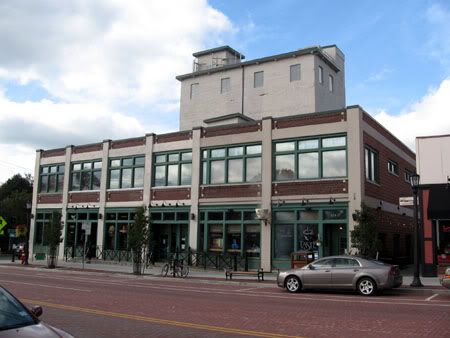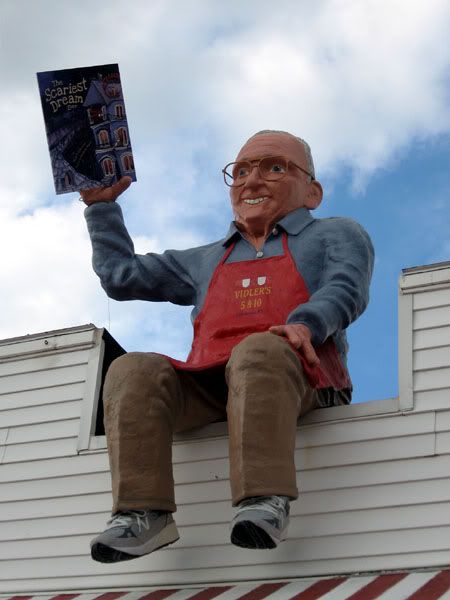I've actually caught myself wondering why traffic lights are the way that they are. Why Red-Yellow-Green? Do other countries use the same colors? So I jumped at the opportunity to do a little research on the subject and get credit for it. Speaking of traffic lights, I have a typical US example here:
Red on top, yellow in the center, and green on the bottom. This order is the same everywhere in the world from the information I could gather. However, not all lights are aligned vertically like this. As you may have seen around the country, some are horizontal instead. The one on top is from Canada, where vertical lights are common, while the one on the bottom is from Japan, where it is the norm to orient the lights horizontally.
While interviewing people around the world, I was at first surprised how alike traffic signals were. Even in Japan, the basics are the same. However, interviewing a friend in England, I was taken aback when he described the light sequence as "Red, Red-Amber, Green, Amber, and Red again." An interview with a German friend turned up the same thing. Sure enough, the Red-Amber light is a European phenomenon. They described it as a "get ready to go" light, but it lasts only a second, just enough time to take your foot off the brake pedal. To confirm it wasn't something spread by the British Empire, I asked my friend Lee from New Zealand if they used this combination, and they did not, it is confined to Europe. The first picture was sent by my friend in England, the second is from Germany.
By now another oddity was catching my attention. The British traffic light was attached to a pole at the side of the road, where in the US we might set up a stop sign. I asked if this was typical in the United Kingdom and was told that it was. I began to ask around my contacts about this and it seemed universal: In England, in Germany, in Chile, in Japan, and in New Zealand, traffic lights were posted beside the road, or attached to a pole which extended over the road. Never did I hear an account of lights being suspended over the intersection by wire, which is somewhat universal in the United States. The next two photos show overhead lights from Germany and Japan, both mounted by poles over their respective intersections:
Of course, not all traffic lights are directed at cars. The United States is a very car-centric society, but elsewhere traffic lights are used for all sorts of traffic. I have two German examples, the first used for a bike path crossing a street. The second shows a more typical pedestrian crossing, with a flashing yellow light to warn oncoming traffic that the crosswalk is is use. The third example is a pedestrian light from Japan, which shows a visual countdown.
Now that we've taken a quick tour around the world to look at their lights, let's turn our eyes to the future of the traffic light. Although the position of the colors on the traffic light are standardized, the colors all look the same for people with red-green color blindness. One solution for this comes in the form of changing the shapes of each light, so it doesn't rely on color alone. To paraphrase the movie Starman, "Square means go, Triangle means stop, Circle means go really really fast."
Another innovation in the design of the traffic light is the addition of a progress bar so commuters can tell how long a red light will stay red. The idea behind this design is that drivers can turn off their car at a red light to conserve gas and cut down on emissions while knowing how much time they have to do this. Personally, I don't think this is a good idea, since I've heard turning on a car burns a whole minute's worth of gasoline, and most lights don't last that long... but I do appreciate the idea of a progress bar.
Other changes are much more mundane and are already ongoing. For example, you may have noticed in recent years that traffic lights have been receiving a face lift. Incandescent bulbs in signals are being replaced by LED displays, reducing power requirements. Considering that traffic lights are constantly active and how many lights are in any given city, the savings add up quickly.
Also becoming more prevalent is the use of programed lights. Whereas lights used to be operated manually, and then predominately on timers, traffic lights can now my synchronized along a roadway so that, in theory, traffic should be able to pass through and hit all green lights. I've had limited success with this so far, and sometimes it seems I hit all red lights, but technology will catch up one day.
Thursday, September 30, 2010
Sunday, September 19, 2010
Main Street, EA
Here is a video of the Main Street of my hometown. It's important because the video was made back in April of 2008, before a major construction project tore up the road in its entirety and Main Street received a face lift. The town itself has gone through several changes as well. The Napa building (The blue one to the left of the first intersection) has been torn down and replaced by a CVS. The Infusion restaurant on the right side of the intersection is closed. The Montana Mills bakery is now Towne Bistro. The brand-new Starbucks on the circle is closed and empty. And the Mobil gas station has been torn down and a new one is under construction.
The goal of the reconstruction was to return Main Street to a more pedestrian-friendly environment with an old town feel. The bricks were removed from underneath the railroad viaduct and new ones were laid to pave upper Main St. This is what it looks like today:
Upper Main Street is commercial and suited for walking by foot. Having walked to upper Main Street from lower Main Street, the trip is all up-hill with a lot more trees and fewer destinations. Upper Main Street is also *much* older than lower Main Street. Here are a few locations:
The last picture is of the former Griggs & Ball building. Run down and virtually abandoned for most of my childhood, the lower two floors were finally refurbished a few years ago and now house a restaurant and coffee shop. The floors above it, however, still appear to be abandoned, but are not as run down as it once was. The block behind the Griggs & Ball building was also home to the Riley Street train station and at least one grain silo, and I believe Griggs & Ball was once an agricultural supplier. Although the building towers above the rest of the town, one of the most iconic buildings of East Aurora is the following:
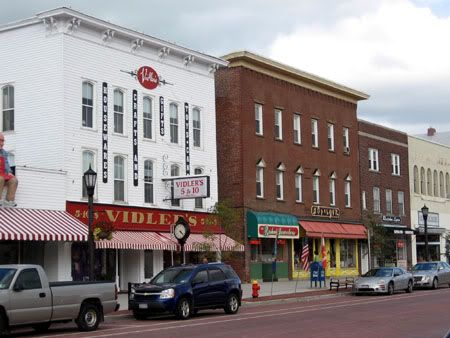
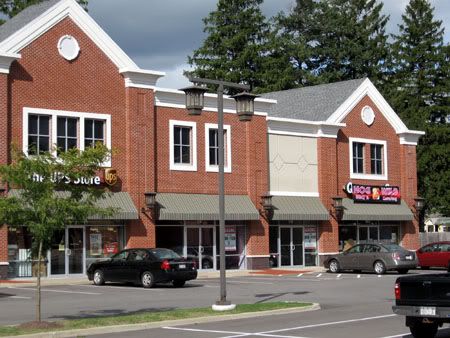
The goal of the reconstruction was to return Main Street to a more pedestrian-friendly environment with an old town feel. The bricks were removed from underneath the railroad viaduct and new ones were laid to pave upper Main St. This is what it looks like today:
Upper Main Street is commercial and suited for walking by foot. Having walked to upper Main Street from lower Main Street, the trip is all up-hill with a lot more trees and fewer destinations. Upper Main Street is also *much* older than lower Main Street. Here are a few locations:
The last picture is of the former Griggs & Ball building. Run down and virtually abandoned for most of my childhood, the lower two floors were finally refurbished a few years ago and now house a restaurant and coffee shop. The floors above it, however, still appear to be abandoned, but are not as run down as it once was. The block behind the Griggs & Ball building was also home to the Riley Street train station and at least one grain silo, and I believe Griggs & Ball was once an agricultural supplier. Although the building towers above the rest of the town, one of the most iconic buildings of East Aurora is the following:

The building on the left is Vidler's Five and Dime, one of the few remaining in America. It actually consists of three buildings, but only the right one is in frame. Many of the buildings, even on the upper Main Street, rent out their upper floors as apartments. My mother lived in one such apartment, and I have known others who have as well. Just the same, I went into Vidler's and spoke to the manager to find out what the second and third floors were used for and just how long they've been used for it. The second floor, he explained, has been rented out as a residence "since forever." Before I could ask how long that was, he went on to explain that the third floor, used for storage now, had been used as a meeting place back during the turn of the century.
The "Vidler on the Roof" is a new addition.

In contrast to the older buildings of upper Main Street, this picture was taken in a plaza next to the traffic circle. The buildings here are only 6 or 7 years old, but emulate the two-story tradition of the rest of the town. As a former employee of the former Quiznos Sub shop (Now Hog BBQ, on the right) I can say that the second floor of this building is most certainly not used for housing or storage. It is accessible only by bringing your own ladder and, even then, was only accessed to service our air conditioner. The second floor is more of a mock-up for a better look from the outside.
Thursday, September 9, 2010
In the Begining...
I spent a week trying to think of a name for this thing and settled on "Crossroads of Aurora." But... then I decided that sounded a tad over the top, so I opted for the word play instead.
Subscribe to:
Comments (Atom)








